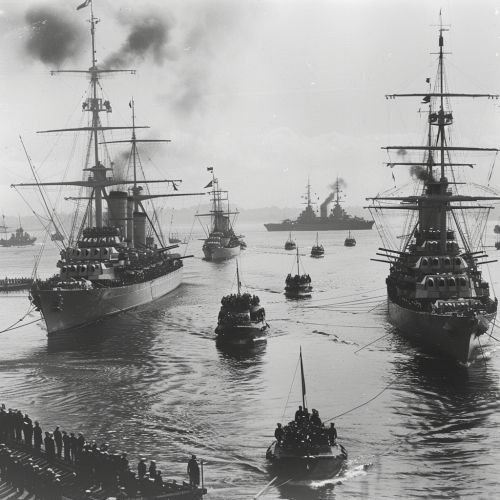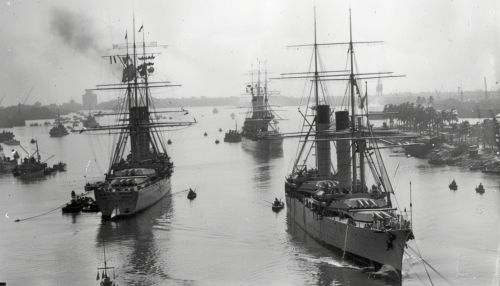Battle of Manila Bay
Background
The Battle of Manila Bay took place on May 1, 1898, during the Spanish-American War. The battle was a decisive naval engagement that led to the United States acquiring control over the Philippines from Spain. The battle was initiated by the United States in an effort to destroy the Spanish Pacific Squadron, which was anchored in Manila Bay.


Prelude to the Battle
The United States declared war on Spain on April 25, 1898, following the sinking of the USS Maine in Havana Harbor in February. The USS Maine was an American naval ship that exploded in Havana Harbor during the Cuban revolt against Spain. The explosion was a catalyst for the United States' declaration of war on Spain, as it was believed at the time that the ship had been destroyed by a Spanish mine.
The Battle
The U.S. Pacific Squadron, under the command of Commodore George Dewey, was dispatched from Hong Kong to the Philippines following the declaration of war. The squadron consisted of four cruisers and two gunboats. On the morning of May 1, Dewey's squadron entered Manila Bay and engaged the Spanish Pacific Squadron, which was under the command of Admiral Patricio Montojo.
The Spanish squadron consisted of seven ships, including two cruisers and five gunboats. Despite being outnumbered, the Spanish ships put up a fierce resistance. However, the superior firepower and tactics of the American squadron soon overwhelmed the Spanish ships.
Aftermath
The Battle of Manila Bay was a decisive victory for the United States. All seven Spanish ships were either sunk or captured, while the American squadron suffered only minor damage. The victory effectively ended Spanish colonial rule in the Philippines and marked the beginning of American involvement in the region.
Significance
The Battle of Manila Bay was significant for several reasons. It marked the first major engagement of the Spanish-American War and resulted in a decisive victory for the United States. The battle also marked the emergence of the United States as a global naval power. Furthermore, the victory led to the United States acquiring control over the Philippines, which became a key strategic location for the United States in the Pacific.
